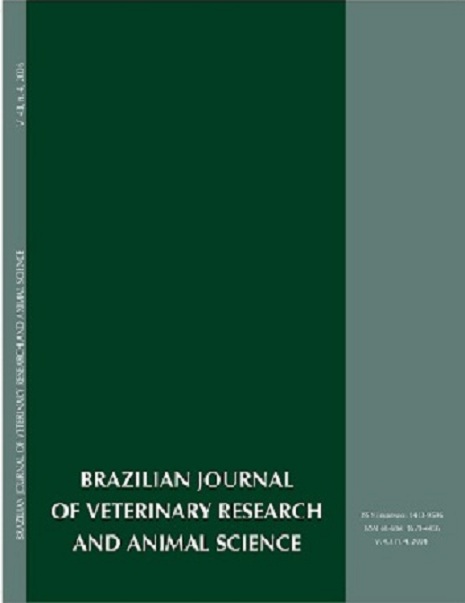Effects of trimming on dairy cattle hoof weight bearing surfaces and pressure distributions
DOI:
https://doi.org/10.11606/issn.1678-4456.bjvras.2006.26468Keywords:
Pressure distribution, Claw, Sole ulcer, LamenessAbstract
Claw lameness can be associated to biomechanical factors caused by unbalanced pressure distribution under the hooves when cows are confined in modern dairy operations with hard concrete flooring. In the present study, an original claw subdivision4 was slightly modified to differentiate between the anterior (typical sole lesion spot) and posterior portions of the medial sole, and to emphasize the maximum pressures applied only on the area of contact without including the total area within these regions during midstance. The results, obtained showed significance (p < 0.044) for the interaction among Group, Leg and region (G*L*R). It was observed that the rear portion of the claws (heels) on the hind limb of untrimmed cows, are more stressed than the heel region on trimmed cows (23 % versus 16.72% of total pressure applied on the claw for untrimmed and trimmed respectively). The typical sole lesion spot pressures were increased slightly on trimmed cows as compared to untrimmed (20.20% versus 15.9%). The front feet presented differences in pressure concentration on the lateral sole between both groups (29% versus 23.25% for untrimmed versus trimmed respectively). It was concluded that, although the differences were small (5%) changes in pressure concentration, untrimmed cows stress more the sole lateral as compared to trimmed on the front feet, and on the rear feet, they stress more the heel region whereas trimmed cows tend to have a slight better balance among regions. Conversely, when cows are trimmed, the typical sole lesion spot concentrates more pressure than the heel itself (20.20% versus 16.72% respectively) and may favor the occurrence of sole ulcers.Downloads
Download data is not yet available.
Downloads
Published
2006-08-01
Issue
Section
UNDEFINIED
License
The journal content is authorized under the Creative Commons BY-NC-SA license (summary of the license: https://
How to Cite
1.
Carvalho V, Nääs IA, Bucklin RA, Shearer JK, Shearer L, Massafera Jr. V, et al. Effects of trimming on dairy cattle hoof weight bearing surfaces and pressure distributions. Braz. J. Vet. Res. Anim. Sci. [Internet]. 2006 Aug. 1 [cited 2024 Apr. 19];43(4):518-25. Available from: https://www.revistas.usp.br/bjvras/article/view/26468





